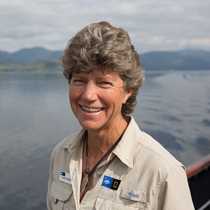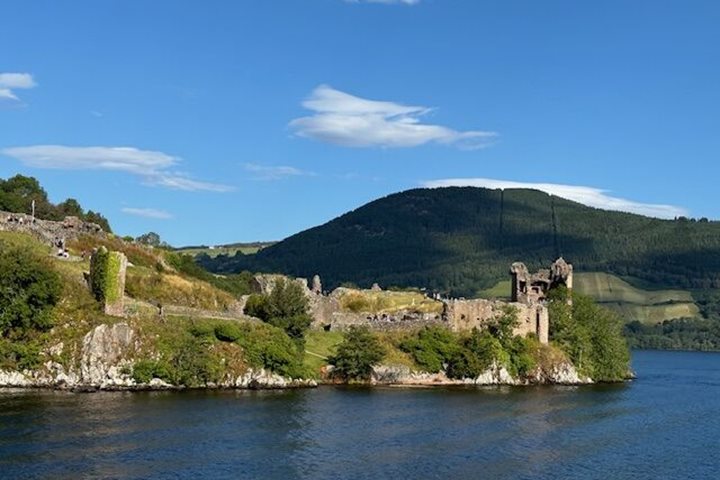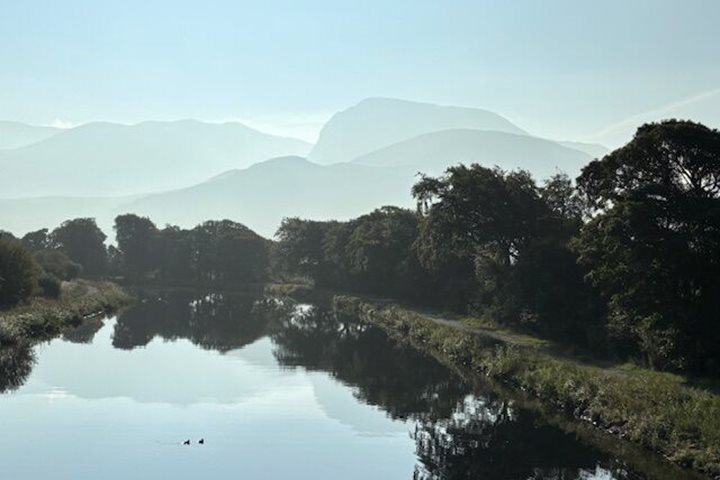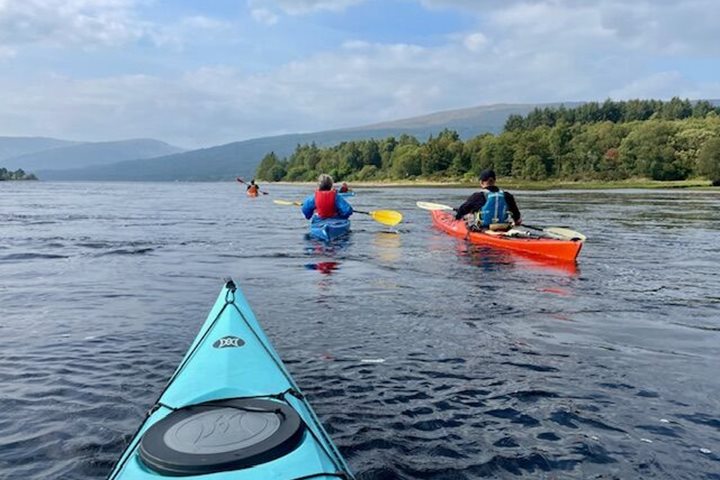Our week in the Highlands began last night with a welcome dinner and young Highland dancers from an award-winning Inverness dance school. The following morning, we started our journey on Lord of the Glens along the Caledonian Canal, 60 miles of both natural lochs and constructed canal, running along the natural fault line of the Great Glen. We will travel southwest along the canal for the next two days.
By morning, we were off the ship exploring the Culloden Battlefield, the site of the last clash between Hanoverian troops and the Jacobites who supported Prince Charles in his effort to reclaim the throne for the Stuarts. In the Battle of Culloden, the Jacobites suffered a bloody, devastating defeat, ending the Jacobite uprisings and beginning the crushing of Highland culture. The Culloden Visitor Centre provides an excellent in-depth history of the Jacobite risings and the battle. The surrounding field holds interpretive signs and more poignantly, headstones and markers for the thousands who died in the battle.
Clava Cairns was our next stop, a Neolithic-Bronze Age site consisting of three large burial cairns and several standing stones built about 4,000 years ago. These monuments are oriented with the sun; when the winter solstice sun rises, the rays shine down the passageways of the massive cairns. The large beech and birch trees surrounding the megaliths are recent changes to this sacred landscape. In 1870, the landowner planted the trees to create a druidic grove, although druids were of Iron Age time, thousands of years later than when the cairns were constructed.The result is a park of towering trees that offered shelter from the drizzly rain that accompanied us during our visit.
We rejoined the ship a few miles along the canal, and entered the famous Loch Ness over lunch, a 23-mile-long, 755-foot-deep loch that holds more freshwater than all of England and Wales combined—deep enough to hide a monster. On the shores of Loch Ness stands the atmospheric Urquhart Castle, a medieval castle with a violent history. In the 14th century, Robert the Bruce regained the castle from King Edward I, and in following centuries, it was frequently attacked by the MacDonalds. The castle was blown up in 1692 to prevent Jacobite rebels from using it, leaving only crumbled towers and walls.
As we sailed across Loch Ness, we heard a talk on “Photography for Any Camera,” with ideas on how to capture and share travel experiences using any camera, from smartphone to DSLR. On the far end of Loch Ness, we reached Fort Augustus, our berth for the night. This small town was established as a fort in 1729, part of the effort to subdue the Jacobites. The town is named after William Augustus, second son of King George II, who led the government troops at the Battle of Culloden. Despite the rainy weather, many disembarked to explore the town.
Before dinner, the captain spoke about the history and construction of the Caledonian Canal. The day came to a close with more Scottish tunes by the local musical duo, the Nessies.









